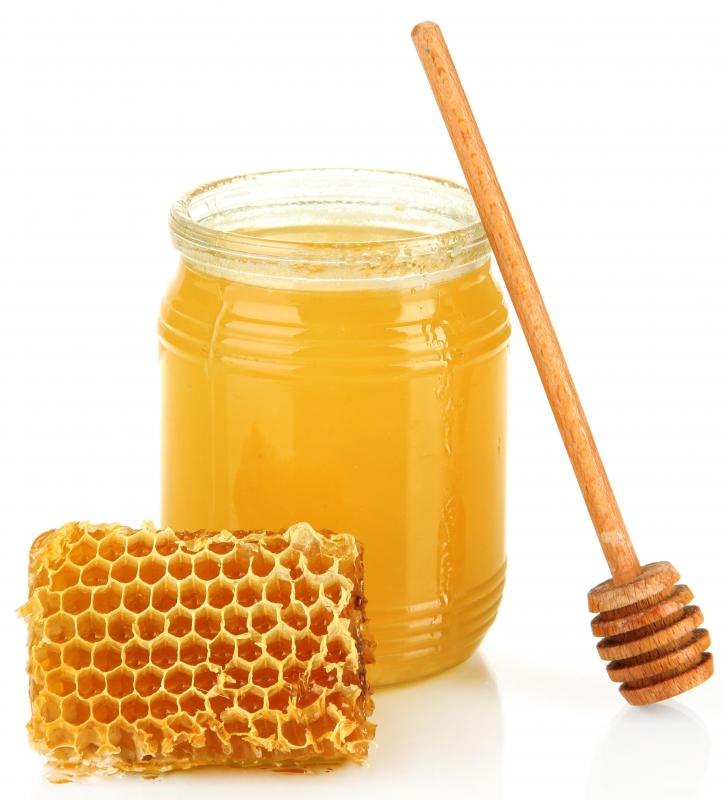At WiseGEEK, we're committed to delivering accurate, trustworthy information. Our expert-authored content is rigorously fact-checked and sourced from credible authorities. Discover how we uphold the highest standards in providing you with reliable knowledge.
What Is Creamed Honey?
Creamed honey is a spreadable kind of honey that does not drip like regular raw honey. Also called whipped honey, creamed honey has small crystals instead of the larger crystals that form naturally in honey. The process of creaming honey involves controlling they honey’s temperature, which in turn controls the size of the honey’s crystals.
When creamed, honey has a consistency that is different from raw honey. Instead of being sticky and dripping easily like raw honey, once creamed the honey takes on a consistency that is similar to softened butter. The honey spreads easily on bread and other foods with a butter knife.

Creating creamed honey requires a tight control over the temperature of the honey. The honey is first pasteurized or heated to the point that any yeast or other impurities in the honey are purged. Instead of letting the pasteurized honey cool at room temperature, the person making the honey must place it in a controlled environment with a temperature of 57°F (about 13.88°C).

After it is produced, the creamed honey still needs to be kept in a temperature-controlled environment. Keeping the honey at roughly room temperature, or between 60 and 75°F (about 15.5 to 23.9°C), maintains the honey’s butter-like qualities. Putting the honey in temperatures above 75°F (about 23.9°C) causes the honey to form large and coarse crystals, making it harder to spread. Cooling the honey also makes it difficult to spread, since the crystals already present in it will lose some of their fineness.

Beekeepers might also introduce flavoring and coloring to creamed honey. Flavorings may include fruit concentrates such as strawberry, cherry or orange. Other flavors of honey come from nuts like pecans or almonds. Vanilla and caramel also may be used by beekeepers, or combined with other flavorings to achieve a desired taste.
A wide variety of foods might be consumed along with creamed honey. Breads, pancakes and pastries may be spread or filled with plain or flavored honey. The mixture may also be drizzled over ice cream or other desserts to add flavoring.
Sometimes a beekeeper will introduce a mixture of ten percent already finished product and ninety percent pasteurized honey during the creaming process. With the ten percent of honey that has the small crystals formed, the rest of the honey has the tendency to mimic the size of the crystals. If the beekeeper does not have a finished product yet, he can allow honey to crystallize naturally and then vigorously stir the honey to break down the large crystals.
AS FEATURED ON:
AS FEATURED ON:













Discussion Comments
Creamed honey is really good, but I wish it didn't have to be pasteurized to get that creamy quality. One of the great things about raw honey is that eating a spoonful or two of local honey every day really does help reduce allergies and all in the spring when everything starts blooming. I didn't believe it until I tried it and I certainly believe it now. The last two springs have been much more comfortable for me since I started eating a little local honey every day.
I don't eat a lot of honey, but I do love creamed honey on biscuits or toast. It's really good. I like honey in general, but there's something extra luscious about creamed honey that makes it hard to put down. Which is why I don't have it around the house very often.
Post your comments